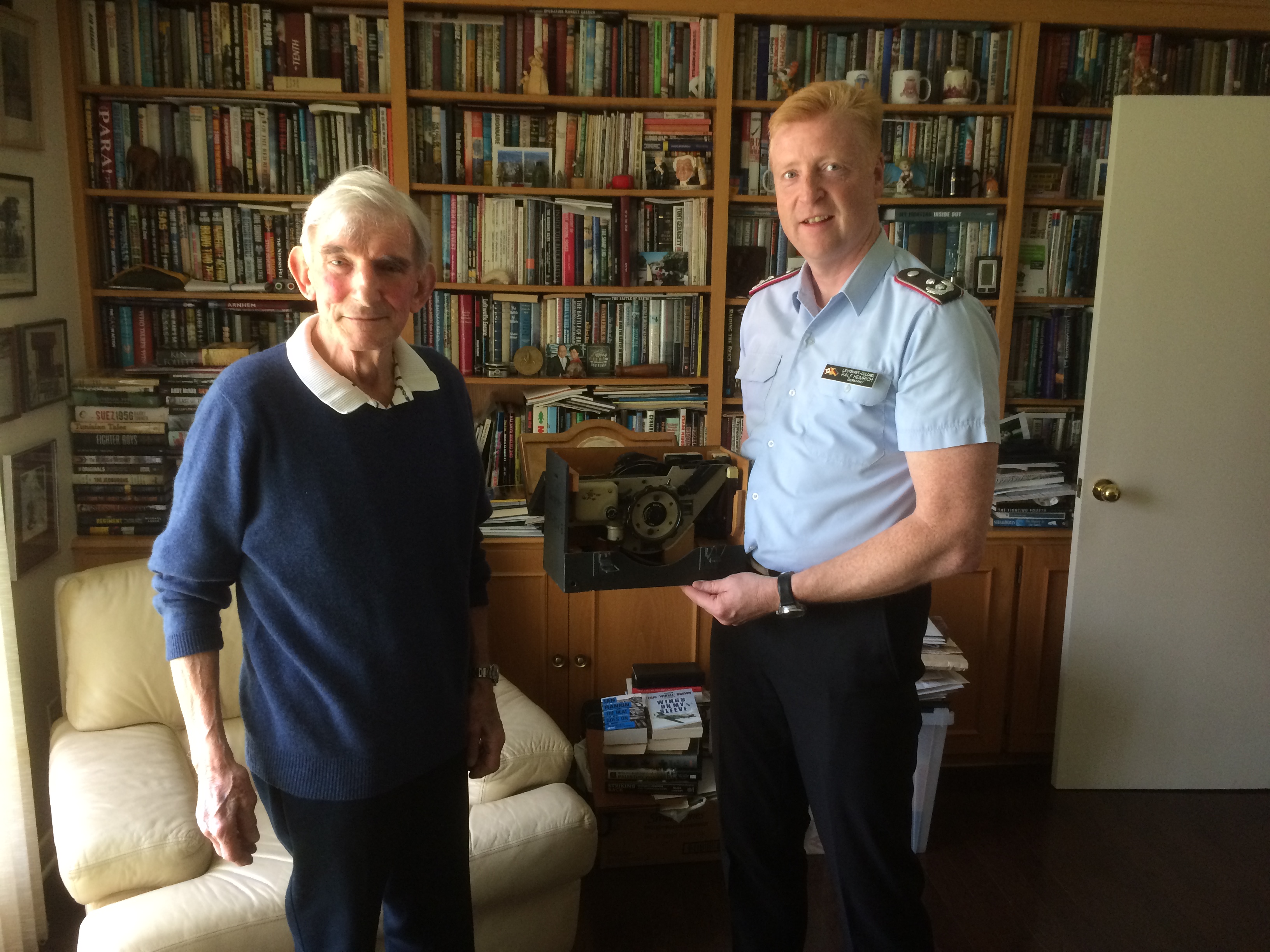
From Canadian home to German museum
Defence Attaché of the Federal Republic of Germany in Canada, Lieutenant-Colonel Ralf Heimrich, recently received a token a Canadian man once collected as a little boy in the United Kingdom from a crash-landed German Air Force plane during the Second World War.
Airplane navigation system from a WW2 airplane finds its way back to Germany
Michael ‘Luvi’ Croghan, an 86-year-old retired lawyer and former British soldier, had stored for decades an octant, a navigation instrument, he found in a crash-landed Focke Wulf Fw 200 “Condor” in the spring of 1941.
Growing up in Liverpool, UK, in the 1930s, Mr. Croghan had to leave his hometown when German bombardments, the so-called “Blitz”, became too dangerous and he was sent to relatives in Northern Wales to the Island of Anglesey.
He witnessed several safety and crash landings of German Luftwaffe airplanes. While local authorities detained the crews, Mr. Croghan and other children examined the aircraft wrecks and took away what they thought was useful or interesting.
Croghan found once a belt buckle, in another case an aeronautical map of Liverpool and Manchester, and finally the undamaged octant.
Living in Toronto, ON, many years later, he contacted the Defence Attaché staff in Ottawa with the desire to give the octant back to Germany or the family of the navigation officer of this airplane.
When the Defence Attaché staff investigated with several museums in Germany, they discovered the octant was an integral part of the Condor airplane, not a personal belonging of the navigation officer.
The artifact will now go to the Deutsches Technikmuseum Berlin where it will be included in the future display of a Condor aircraft that had been recovered in Norwegian waters in 1999 and which has since been refurbished in the Airbus factory in Bremen.